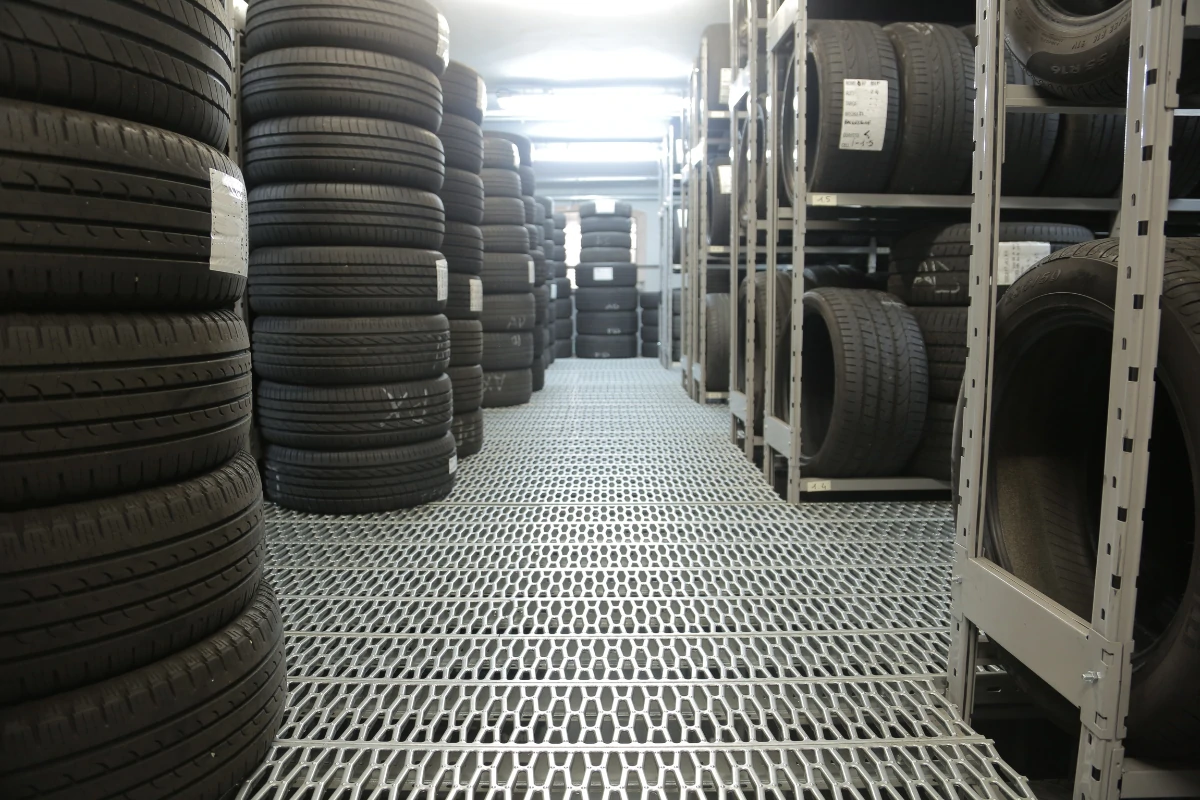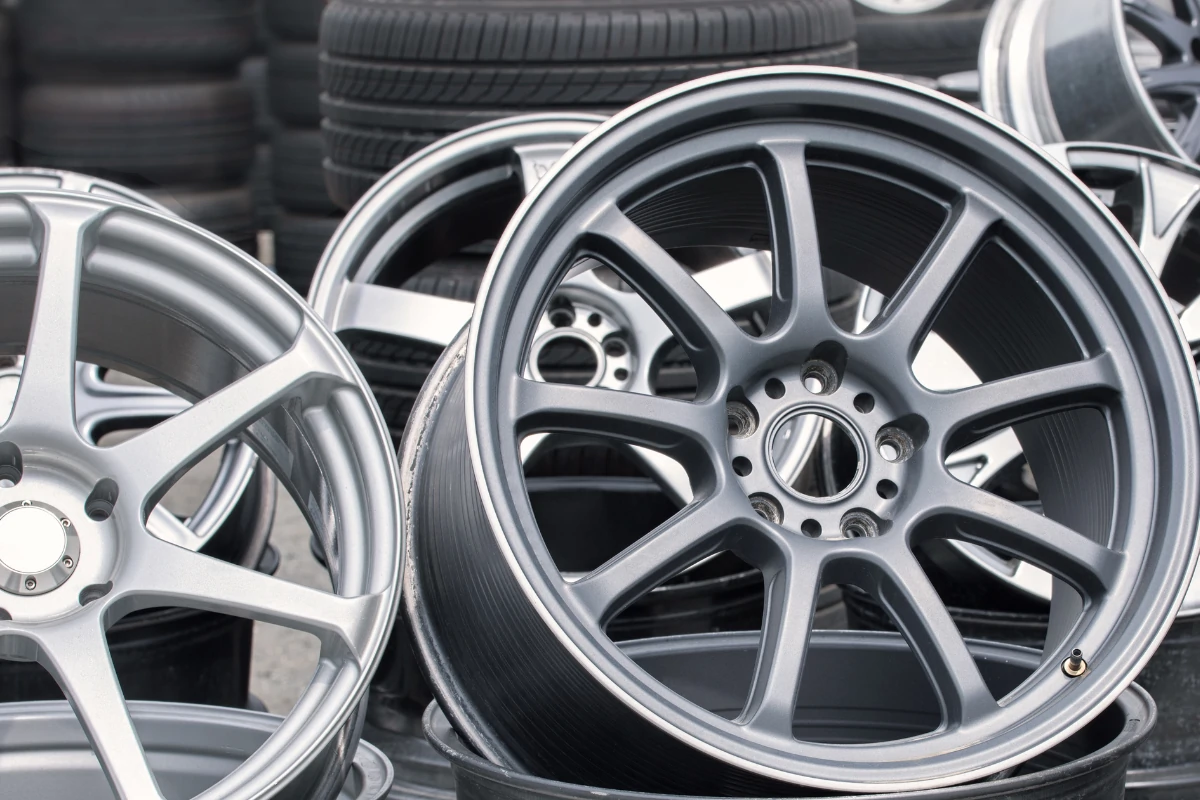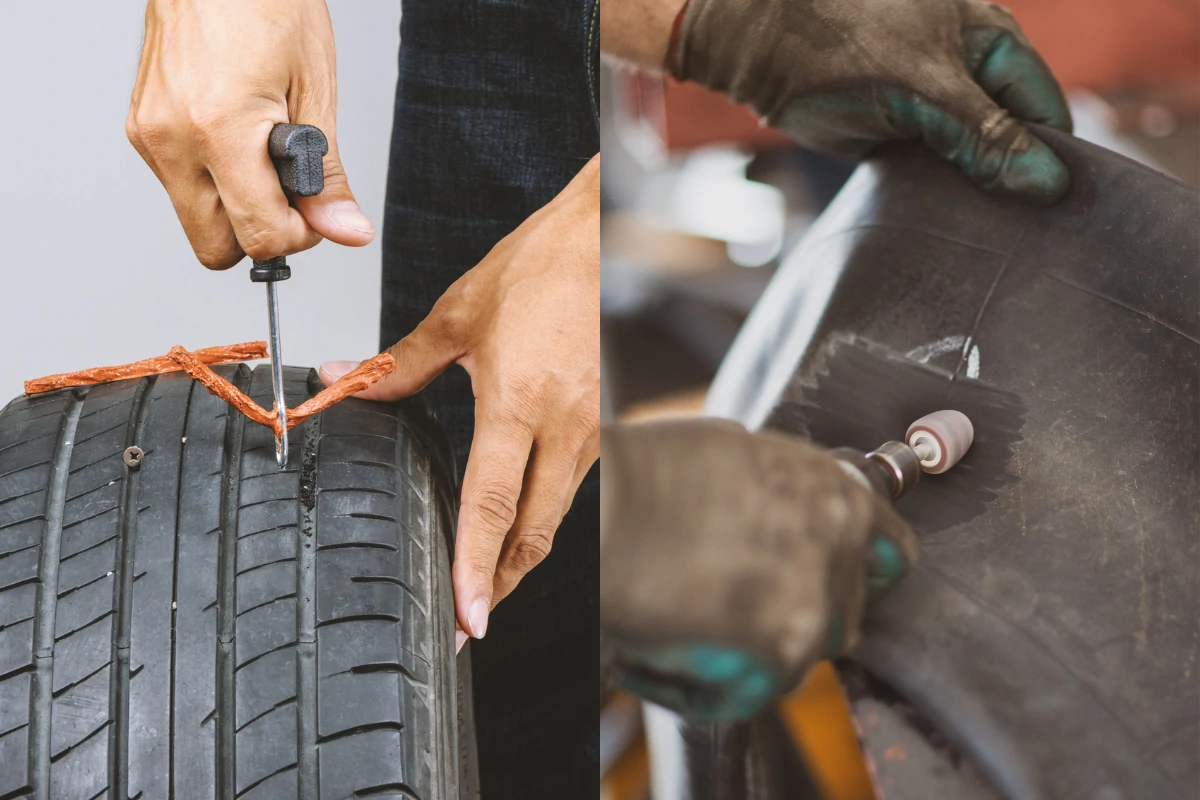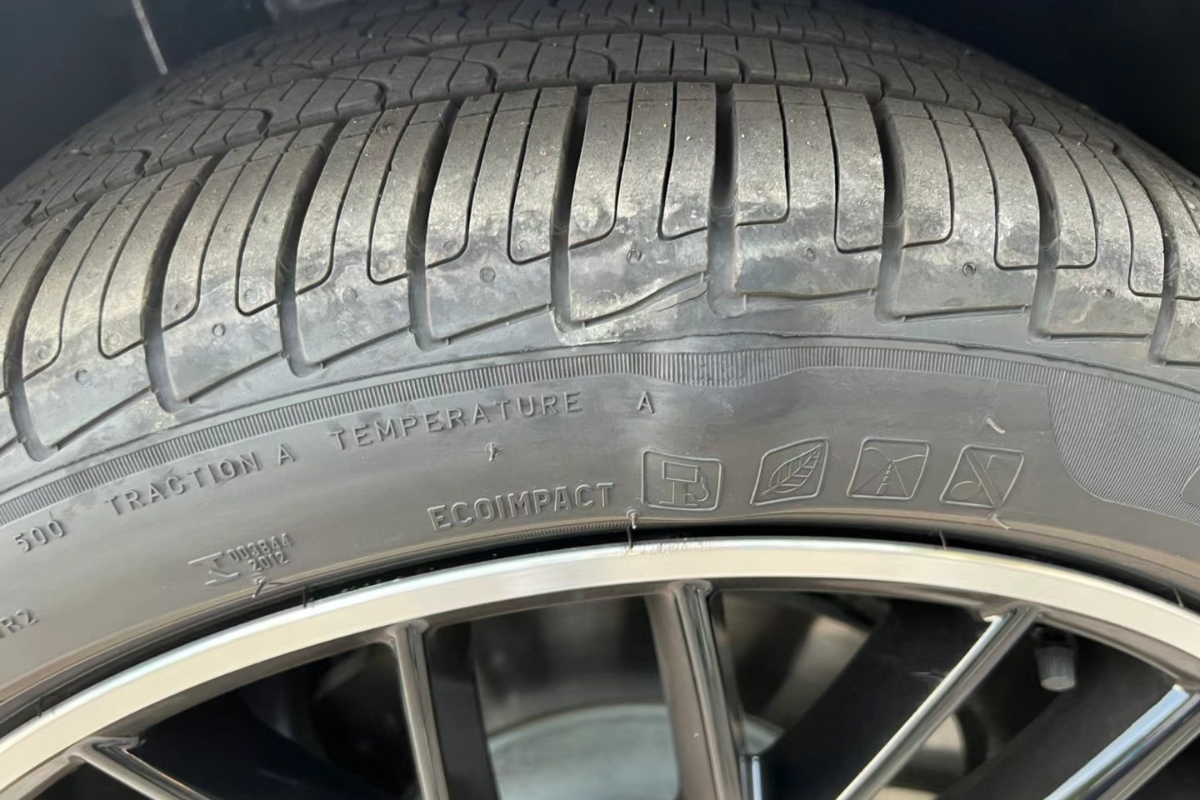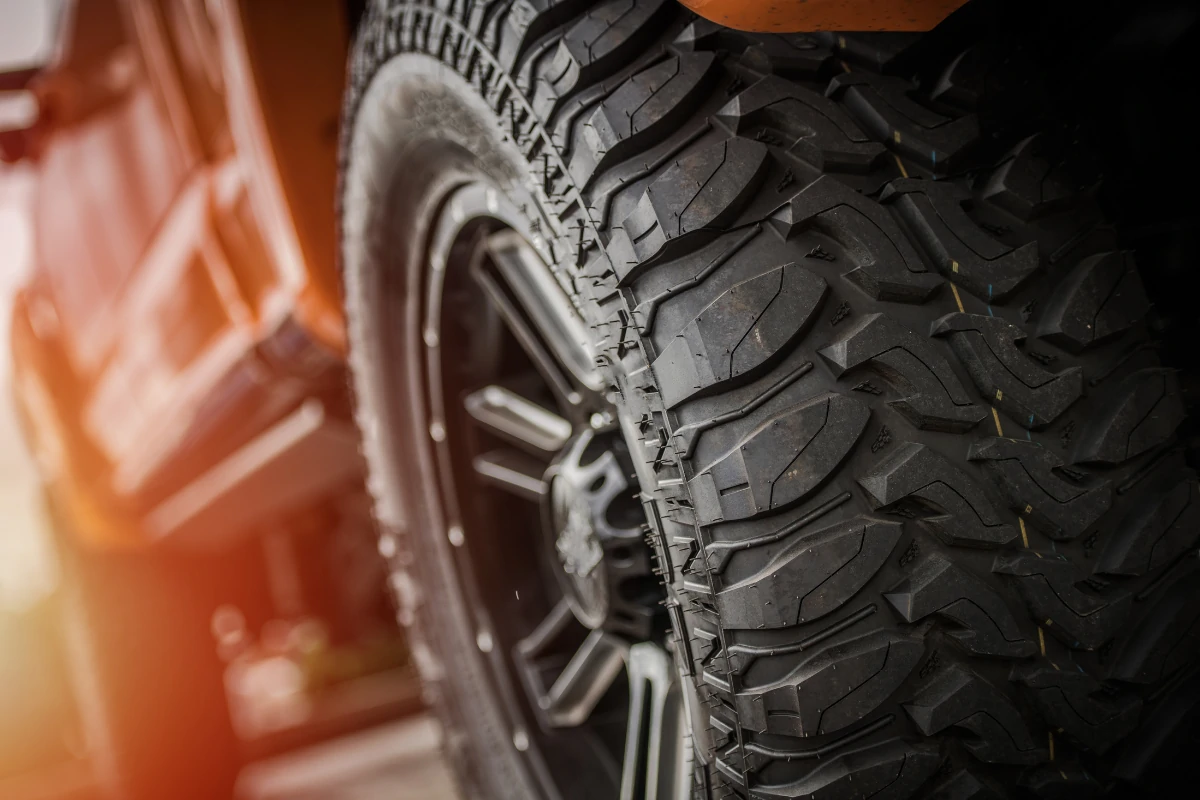Having the proper tire pressure for your driving experience and the longevity of tires is vital. As an engineer with eight years of experience working for a tire manufacturer, my family and friends often ask, “What is the correct tire pressure?”
So, this article is designed to provide you all with helpful information about tire pressure. By the end of this article, you’ll know:
- The correct tire pressure for your car
- How to check tire pressure with a tire pressure gauge
- Three types of tire pressure gauges and their features
- What is TPMS and how it works
- Risk of over/under inflated tire
- ……
Table of Contents
What Should My Tire Pressure Be?
Most manufacturers advise maintaining tire pressure between 30 and 33 pounds per square inch (PSI) for all tires. However, certain vehicles may have specific PSI recommendations for their front and rear tires.
The tire size and recommended pressure are typically displayed on a label affixed to the driver’s side door jamb. In the case of vehicles manufactured before 2006, this label may be situated within the glove box door, fuel filler flap, trunk lid, or console. If the label cannot be located, the tire and loading specifications can usually be found in the owner’s manual.

US drivers should refer to a two-digit number on the label, such as 33, followed by PSI, to determine the recommended pressure. Alternatively, countries utilizing metric measurements may express air pressure in kPa, or kilopascal. One PSI is equivalent to 6.89 kPa.
Attention: The pressure information indicated on your vehicle’s label still applies to new tires of the same size.
It is also important to differentiate between the recommended and maximum pressure.
-
- The recommended pressure is extensively scientifically tested by the vehicle manufacturer. As mentioned above, it can be found on the door jamb or in the owner’s manual.
- On the other hand, the maximum pressure is generally listed on the tire sidewall. It is given by the tire manufacturer, representing the upper limit of pressure that the tire can safely endure.
The National Highway Traffic Safety Administration (NHTSA) advises that the correct tire pressure should be the value specified by the vehicle manufacturer, not the value listed on the tire.[1]
How to Check Tire Pressure?
A step-by-step guide with a tire pressure gauge
To ensure that your tires are properly inflated, you need to use a tire pressure gauge. It’s a straightforward tool that provides accurate pressure readings. In this part, I’ll show you how to use a tire pressure gauge precisely and quickly.
Preparation
Please be advised that the recommended pressures provided by the vehicle manufacturer are specified as “COLD TIRE PRESSURE.” And it means that the recommended pressure is based on an environmental temperature of 68°F/20°C. When the temperature rises by 10°F/5.5°C, the tire pressure will increase by one psi. Conversely, when the temperature drops by 10°F/5.5°C, the tire pressure will decrease by one psi.
Therefore, it is best to measure the pressure when tires are cold, ideally first thing in the morning or after the vehicle has been parked in a shaded area for at least 3 hours. It is important to note that if the sun has been shining on the tires, especially on one side of the vehicle. The tires on the sunny side may read 2-3 psi higher than the other side of the tires.
Step 1: Locate the valve stem accurately.

The valve stem is a small protrusion from the tire and can be found on the edge of the rim. Ensure you locate the correct valve stem for the tire you want to check.
Step 2: Remove the valve stem cap.

The valve stem cap is designed to protect the valve stem from dirt and debris. Once you take off the cap, make sure you keep it safe. You can also have a spare cap on hand to replace it when everything is finished.
Don’t worry about air leakage from the tire once the valve cap has been removed. Each tire valve is equipped with a spring-loaded valve core. It can make tires automatically seal itself using internal air pressure.
Step 3: Press the gauge firmly.

Press the gauge firmly onto the valve stem. The gauge, when pressed against the valve core, opens the valve and permits the gauge to function as a seal, consequently measuring the tire’s PSI rating and maintaining the tire’s internal air pressure.
If you hear a hissing sound when using a tire pressure gauge, it means that the gauge is not measuring the proper tire pressure. To fix this issue, adjust the angle of the gauge inside the valve until the sound stops.
Step 4: Check the pressure reading.
Check the pressure reading on the gauge. The gauge will display the tire pressure in PSI (pounds per square inch). The recommended PSI can usually be found on the tire information label located on the driver’s side door jamb or in the owner’s handbook.
There are three types of tire pressure gauges that are commonly available in the market: pencil/stick, dial, and digital.

-
- Pencil/Stick gauges are the most basic and portable option, consisting of a small rod with a sliding indicator that shows the pressure reading. While inexpensive and easy to use, they are not always the most accurate and can be prone to wear and tear.
- Dial gauges, conversely, are more precise and durable, featuring a gauge with a needle pointing to the pressure reading. They are typically larger and more expensive than pencil gauges, but they are considered a dependable choice.
- Digital gauges are the most advanced and expensive option, providing the most accurate readings with an easy-to-read digital display. They are also equipped with convenient features such as back-lighting and automatic shut-off. It is crucial to note that during the winter months, the LCD screen of the digital gauge may be impacted by cold temperatures and fail to display readings. So it’s best to keep it in a warm place.
Step 5: Check tire pressure regularly.
The general rule of thumb is to check your tire pressure at least once a month or before any long road trips. However, it’s always a good idea to check your tires more frequently if you notice any unusual wear or damage. Additionally, extreme changes in temperature can affect tire pressure, so it’s essential to check your tires during the winter and summer months when temperatures fluctuate. Last but not least, remember to check the pressure of your spare tire, ensuring it’s ready for use in an emergency.
TPMS

The United States Congress has established a requirement that all vehicles produced after September 2007 must be fitted with a tire pressure monitoring system (TPMS). [2] The system is designed to monitor the air pressure in your tires and alert you when they become under-inflated.
The technology behind TPMS is pretty straightforward. It features a series of sensors inside each tire that detects its air pressure. These sensors transmit the data to the vehicle’s onboard computer, which then analyzes the information and compares it to the recommended tire pressure levels. Suppose the pressure is below the recommended level. In that case, the TPMS will trigger a warning light on the dashboard, alerting the driver to adjust the tire pressure.
Even if your vehicle has a TPMS, other factors may prevent you from obtaining accurate and timely readings, such as faulty sensors. Therefore, regularly checking tire pressure with a tire gauge is still a good idea.
For more information on TPMS System, please check out this blog post – TPMS 101: Understand Your Tire Pressure Monitoring System
Risks of Incorrect Tire Pressure
Underinflated or overinflated tires can increase the risk of accidents on the road. Correct tire pressure helps your vehicle handle well, providing better traction and stability.

Risks of driving with underinflated tires
Vehicle Manufacturers typically do not provide a specific minimum tire pressure. Instead, they recommend a tire pressure necessary for a vehicle to operate safely and effectively. Any pressure lower than this recommended value is not advised.
- An underinflated tire can increase the rolling resistance, which means that the vehicle’s engine has to put in more effort to move down the highway, leading to higher fuel consumption.
- Low tire pressure can bring about faster and uneven wear on tires due to the distortion of their shape. As a result, they require more frequent replacement.
- It could also cause your vehicle to shake and vibrate, which is a discomforting driving condition. Moreover, under-inflation may give rise to tire misalignment, ultimately leading to further issues.
- Underinflation might negatively affect your vehicle’s braking distance and steering control. In addition, it can also increase the likelihood of tire failure, which can be dangerous.
It is crucial to ensure that your vehicle’s tires are inflated to the recommended PSI as indicated in the owner’s manual or on the driver’s side door jamb. Operating your car with tire pressure below the recommended level could compromise your safety on the road.
Risks of driving with overinflated tires
Driving with overinflated tires may seem minor, but it can pose serious risks.
-
- Overinflation can cause the tire to become harder and less flexible, resulting in a reduced ability to absorb shocks and bumps on the road. It can lead to a bumpy and uncomfortable ride, making it harder for the driver to maintain control of the vehicle.
- An overinflated tire can also bring about reduced traction on the road, which can cause skidding or loss of control when turning or braking. It can be hazardous in wet or icy conditions, where even a small traction failure can result in an accident.
- Additionally, overinflation may lead to a rapid decrease in the lifespan of tires. It is due to the rubber rounding out at the top while the center of the tire experiences faster wear. It means they need to be replaced more frequently, adding to the overall cost of vehicle ownership.
Despite the risks, many drivers continue to drive with overinflated tires because they believe it improves fuel efficiency or handling. However, the benefits of overinflation are minimal compared to the potential dangers.
Q&As
Why is the TPMS light still on even though I inflated the tire to the correct pressure?
There could be a leak or damage to the tire that needs to be addressed.
In some cases, the TPMS light may remain on even after the tire has been inflated, repaired or replaced, as the system needs to be reset manually.
Additionally, ensure that your spare tire also has the correct tire pressure. Some car models have a tire pressure sensor installed on the spare tire, so it is crucial to check the pressure on it as well.
When I put on a new tire, should I inflate it to the PSI listed on the tire?
No. Remember that you should inflate your new tires according to the tire information label on the door jamb or owner’s manual rather than the pressure on the tire.
Can I use the tire pressure gauge available at the gas station?
Yes, you can, but I don’t suggest that. Due to the effects of weathering, gauges in gas stations may become inaccurate. It’s best to have your own tire gauge at home.
Can I go to the gas station to inflate my tires?
The answer is YES. For some people, inflating tires at home can be challenging, so they drive to a gas station. However, driving will cause the tires to heat up, which can increase the pressure. So, it’s best to measure the cold tire pressure before leaving home and do it again at the gas station. You can add the necessary amount of PSI to reach the desired pressure based on your initial reading.


